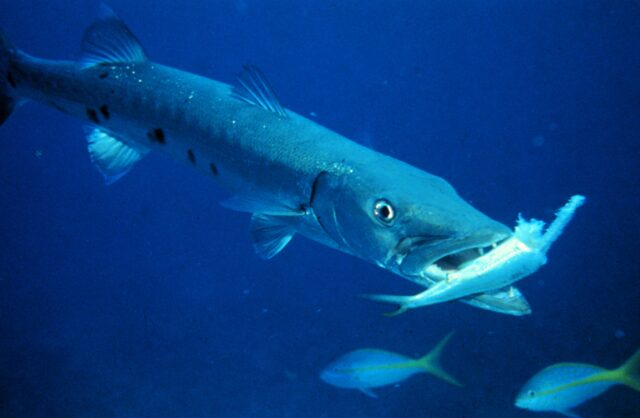The Great barracuda is amongst the top predators in their environment and use very highly developed smell and vision senses to locate their prey. When attacking, the barracuda will charge at fast speed (approximately 12 ms-1) and ram their target. They then unleash the power of their jaws which allows them to slice through their prey, even those larger than the barracuda itself. The jaw of the barracuda is formed in such a way that the upper and lower jaws form ‘rows’ of teeth. The top jaw has smaller serrated teeth on the outside and larger canines on the inside, and the teeth of the lower jaw fit between them when the mouth is shut. When the jaw closes this acts like scissors and slices through prey with ease.
By John Lippmann
Executive Director
DAN S.E. Asia-Pacific
Copyright: John Lippmann
During diver training, dive students are normally drilled to avoid diving beyond 130 feet / 39 meters. However this depth limit recommended by most of the training agencies is not forged in stone. Historically, it appears that it probably emerged from the U.S. Navy, possibly as a result of equipment limitations at that time, and the work restrictions imposed by the relatively short no-stop times available at greater depths.
An increasing number of divers dive beyond the 130-foot limit, some routinely and others occasionally. The advent of dive computers has negated much of the decompression penalty and dive restrictions previously associated with deep diving, and has no doubt encouraged the current trend. In addition, the increased availability of a variety of gas mixtures has enabled more divers to venture deeper and deeper.





